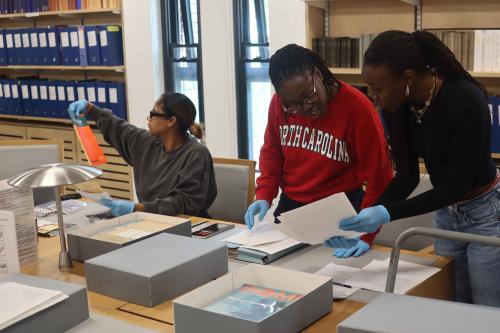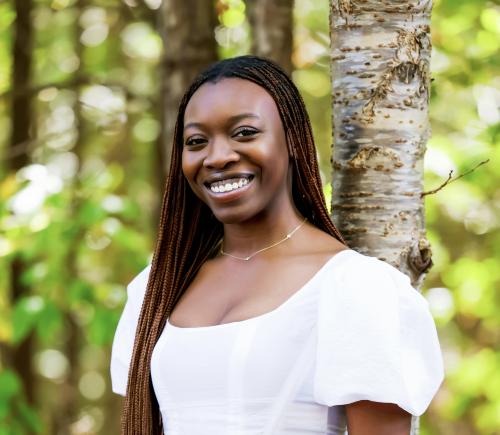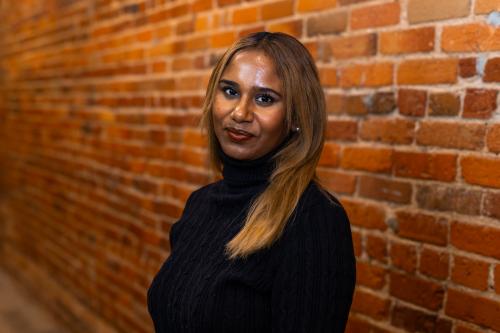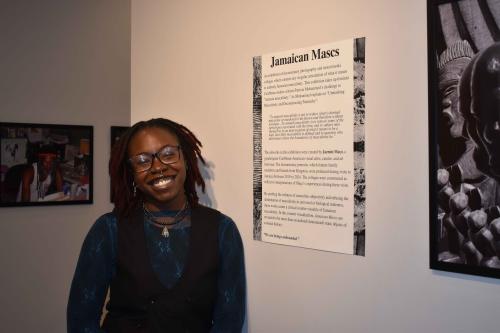
New Fellowship Brings Graduate Researchers Closer to the Work of Theorist Stuart Hall
Stuart Hall was, among many other storied things, an ardent media theorist. Throughout his career, the Jamaican-British academic was keenly aware of the subtexts amplified by mass media about race, class, gender, and more. Hall’s transformational work ushered in a new field in cultural studies, building a framework for researchers to contend with political and cultural debates still relevant today.
Hall’s papers were deposited at the Cadbury Research Library at Birmingham in 2018 and consist of over 100 largely untouched boxes of unpublished reports, essays, scripts and speeches, teaching materials, and other ephemera.
Last summer, the John Hope Franklin Humanities Institute, in collaboration with the Stuart Hall Archive Project (SHAP) at the University of Birmingham, UK, invited three Duke graduate researchers from different disciplines to participate in an eight-week long fellowship.

As Stuart Hall Archive Fellows, the graduate students worked on projects to make the archive more accessible to a wider audience, including working closely with head archivist Rebecca Adams on finding aids, developing community engagement initiatives, and visualizing Hall’s connections to people and institutions.
They also produced academic work, such as journal articles and theses, based on their research into specific aspects of the archive, such as media holdings, campaigns, or Hall’s contributions to public policy. The inaugural fellows walked away from the experience inspired by Hall’s knowledge and eager to implement what they learned into their own fields.
Meet the Fellows
Nzinga Simmons

A fifth year PhD candidate in the Art, Art History & Visual Studies Department at Duke, Simmons’ research focuses on Black contemporary artists who work in new media and examines how technology provides another avenue for exploring Blackness.
“If we look at the history of Black art and think about a moment like the Harlem Renaissance, much of the visual art that was popularized––drawings, sculptures, and paintings––were static art forms presenting Blackness as one dimensional. I’m interested in the artists that were doing something different, who were looking towards the aesthetic possibilities of technology to envision Blackness anew,” Simmons shared.
Simmons’ research presents a kind of continuum, working from the 1960s when Black artists used printers, copiers, and projectors to “capture an ontological Blackness in a more capacious way,” to the transformative art of the 1970s and 80s. The fellowship was an opportunity to interrogate that research focus further.
“What interested me in Stuart Hall’s work was his writing on the kaleidoscopic conditions of blackness, or the idea that Black identity is fluid and to represent it visually means attending to a range of experiences. Innovations in digital technology at the time enabled artists to visualize Blackness in ways akin to Hall’s theories,” Simmons said. Utilizing the tools and resources available at the archive allowed Simmons the opportunity to transform how she saw her own research in new ways.
Rukimani

Third year PhD candidate Rukimani studies literature and critical theory at Duke and said a fellowship highlighting Stuart Hall’s work was essential to participate in. For them, the interest took shape during their undergraduate pursuits where they studied anthropology, film and media, and the intersection race had in these avenues.
“More broadly, my research involves Blackness, technology and surveillance, and South Asian diaspora,” Rukimani shared. “I also examine colonialism and caste through different cultural lenses within the Indian diaspora, like Guyana, Trinidad, and the UK.”
The Black Audio Film Collective and the Black British Artists Movement of the 1980s are inflection points for them that introduced Rukimani to seminal works in Hall’s orbit. “I learned about Stuart Hall while studying the work of people like John Akomfrah and Isaac Julian and really engaging with the concept of political Blackness,” they said.
“I felt so inspired by Stuart Hall’s work as a profound academic and how he deeply understood the shifts in academia–it’s an experience that will continue to actively influence my own research,” Rukimani shared.
Jazmin Maço
Maço, a second year PhD candidate in the Art, Art History & Visual Studies Department, generally focuses on the photographic and cinematic practices of queer people in the Anglophone, or Commonwealth, Caribbean. Their deep personal connections to their Jamaican and Haitian roots inform their creative work as a visual artist and researcher.

After majoring in Africana Studies as an undergraduate at Barnard College, Maço also participated in a digital humanities fellowship while there, extending their dissertation into a digital archive.
“In that project I was using and referencing photographs from my grandmother,” Maço explained. “It really was the moment that started me on this journey in photography in the Caribbean and came full circle during the digital humanities fellowship.”
The Stuart Hall Archive Fellowship seemed a given to apply to for Maço, and traveling to London to the site where his work lived was especially powerful to experience. “It was important to go there as inaugural fellows and diligently record our experience,” Maço shared–they were the documentary photographer during the course of the fellowship.
“We wanted to capture what we were doing and finding in the archive, as well as try to assemble a story through asking questions like, what are these different connections we’re seeing and how do we make sense of them?” Maço said.
“It was amazing and fruitful to engage with the archive in that way, and it pushed me to learn to make connections through the creative expressions of theorists like Stuart Hall and those he collaborated with.”
Hero Image Courtesy Jazmin Maço